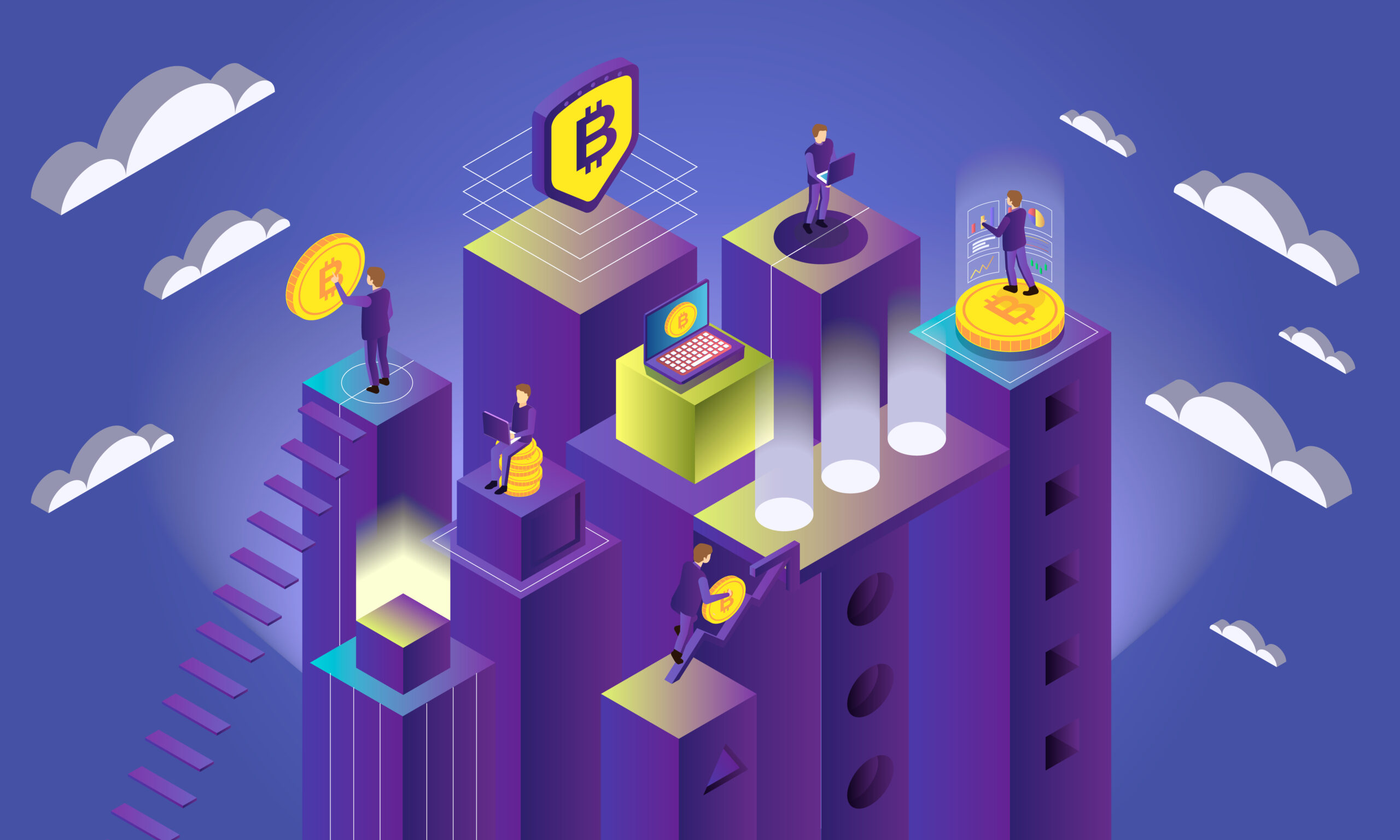The digital world is evolving. The rise of Web3 has brought about a new era of online communities.
These are not your typical forums or social media groups. They are decentralized communities, built on blockchain technology.
Decentralized communities offer a unique blend of autonomy, transparency, and shared governance. They are reshaping how we interact, collaborate, and create value online.
In this article, we delve into the world of decentralized communities in Web3. We explore their structure, their benefits, and the challenges they face.
We also provide insights on how to build and nurture these communities. Whether you’re a blockchain enthusiast, a community manager, or a developer, this guide is for you.
Understanding Decentralized Communities
Decentralized communities are a cornerstone of the Web3 ecosystem. They are digital communities that operate on decentralized networks.
These communities are built on blockchain technology. They leverage the power of smart contracts and tokenomics to create a unique community structure.
In a decentralized community, power is distributed among the members. There is no central authority. Instead, decisions are made collectively, often through a process known as decentralized governance.
Key features of decentralized communities include:
- Shared ownership and governance
- Transparency and auditability
- Incentivization through tokens
- Trustless interactions
- Interoperability and composability
These features set decentralized communities apart from their centralized counterparts. They offer a new way of organizing and collaborating online.
The Role of Blockchain in Decentralized Communities
Blockchain technology is the backbone of decentralized communities. It provides the infrastructure needed for these communities to operate.
Blockchain allows for the creation of decentralized applications (dApps). These dApps serve as the platforms where decentralized communities interact.
Smart contracts automate community operations. They enforce rules and facilitate transactions without the need for a central authority.
Tokenomics, another key aspect of blockchain, incentivizes community participation. Members can earn tokens for contributing to the community. These tokens often carry voting rights, giving members a say in community decisions.
Decentralized vs. Traditional Online Communities
Decentralized communities differ significantly from traditional online communities. The main difference lies in the distribution of power.
In traditional online communities, power is usually centralized. A single entity, such as a company or a group of administrators, makes the decisions.
In contrast, decentralized communities distribute power among their members. Decisions are made collectively, often through voting mechanisms.
Another key difference is in the area of ownership. In decentralized communities, members can have a stake in the community. They can earn tokens, which represent a share of the community’s value.
This sense of ownership can lead to higher levels of engagement and participation. It’s one of the reasons why decentralized communities are gaining traction in the Web3 space.
Decentralized Autonomous Organizations (DAOs)
Decentralized Autonomous Organizations, or DAOs, are a key part of decentralized communities. They provide a framework for community governance.
DAOs operate on blockchain technology. They use smart contracts to automate operations and enforce rules.
In a DAO, members have a say in decision-making. They can propose changes and vote on proposals. This democratic process is a defining feature of DAOs.
DAOs can be used for a variety of purposes. They can govern a community, manage a project, or even run a business. The possibilities are vast and still being explored.
Governance and Tokenomics in DAOs
Governance is a crucial aspect of DAOs. It’s how decisions are made and conflicts are resolved.
In many DAOs, governance is token-based. Members earn tokens for their contributions. These tokens give them voting rights.
Tokenomics, the economic system around tokens, plays a big role in DAOs. It incentivizes participation and aligns the interests of members.
However, governance and tokenomics in DAOs are complex. They require careful design and management. Balancing decentralization with efficiency is a key challenge.
Building a Decentralized Community in Web3
Building a decentralized community in Web3 is a unique process. It requires a deep understanding of blockchain technology and the principles of decentralization.
The first step is to define the purpose of the community. This could be anything from developing a new blockchain project to creating a platform for decentralized finance.
Next, the community needs to be structured. This involves setting up a DAO, designing the tokenomics, and establishing governance rules.
Strategies for Effective Community Engagement
Engaging members is crucial for the success of a decentralized community. There are several strategies that can be effective.
One strategy is to incentivize participation. This can be done through token rewards, bounty programs, or other forms of recognition.
Another strategy is to foster a sense of ownership. Members should feel that they have a stake in the community and its success.
Communication is also key. Clear, regular communication helps to build trust and keep members informed.
- Incentivize participation
- Foster a sense of ownership
- Maintain clear communication
The Importance of Shared Vision and Values
A shared vision and values are the backbone of a decentralized community. They provide a sense of purpose and direction.
Members should feel aligned with the community’s vision. They should also share its values. This creates a strong sense of unity and commitment.
Without a shared vision and values, a decentralized community can become fragmented and ineffective. Therefore, establishing these elements early on is crucial.
Challenges and Solutions in Decentralized Communities
Decentralized communities face unique challenges. These include coordination problems, decision-making difficulties, and issues related to trust and security.
Coordination can be difficult in a decentralized setting. Without a central authority, it can be hard to align everyone’s efforts. However, this can be mitigated by clear communication and effective governance structures.
Decision-making can also be a challenge. Traditional voting mechanisms may not work well in a decentralized context. But solutions like governance tokens and consensus algorithms can help.
Trust and security are also crucial. Blockchain technology can provide transparency and security, but it’s important to educate community members about potential risks.
- Coordination problems
- Decision-making difficulties
- Trust and security issues
Governance and Decision-Making
Governance is a key aspect of decentralized communities. It involves making decisions about the community’s direction and operations.
In a decentralized setting, decision-making can be complex. It often involves a balance between decentralization and the need for some form of leadership or structure.
Governance tokens and consensus mechanisms can help. They allow community members to participate in decision-making, fostering a sense of ownership and engagement.
Trust, Security, and Transparency
Trust, security, and transparency are vital in decentralized communities. Blockchain technology can provide these, but it’s not a magic bullet.
Community members need to understand the technology and its limitations. Education and clear communication are key.
Moreover, it’s important to have mechanisms in place to handle disputes and conflicts. This helps to maintain trust and harmony within the community.
The Future of Decentralized Communities in Web3
Decentralized communities are at the forefront of the Web3 revolution. They are redefining how we interact, collaborate, and create value online.
These communities have the potential to disrupt traditional business and social structures. They offer new forms of employment, economic opportunity, and social interaction.
As Web3 continues to evolve, we can expect to see more innovation and growth in decentralized communities. They will play a key role in shaping the future of the digital world.
Case Studies and Success Stories
There are already many successful decentralized communities in the Web3 space. These communities provide valuable lessons and insights for others.
For example, the Ethereum community has been instrumental in advancing the development of blockchain technology. It has fostered a vibrant ecosystem of developers, investors, and enthusiasts.
Decentraland is another success story. It’s a virtual world owned and operated by its community. Users can buy land, build structures, and create experiences for others.
- Ethereum: A vibrant developer community
- Decentraland: A community-owned virtual world
Looking Ahead: Trends and Predictions
Looking ahead, we can expect to see several trends in decentralized communities.
First, we’ll likely see more cross-community collaboration and interoperability. This will allow communities to share resources and learn from each other.
Second, we’ll see more emphasis on diversity and inclusion. As these communities grow, it’s important to ensure that everyone has a voice.
Finally, we can expect to see more innovation in governance models and community engagement strategies. These will be key to the success and sustainability of decentralized communities.
Conclusion
Decentralized communities are more than just a trend in the Web3 space. They represent a fundamental shift in how we interact, collaborate, and create value online. As we move forward, these communities will continue to evolve and shape the future of the digital world.
Whether you’re a developer, investor, or simply a curious observer, understanding decentralized communities is crucial. They offer a glimpse into the future of the Web3 ecosystem, and the potential it holds for transforming our digital lives.



